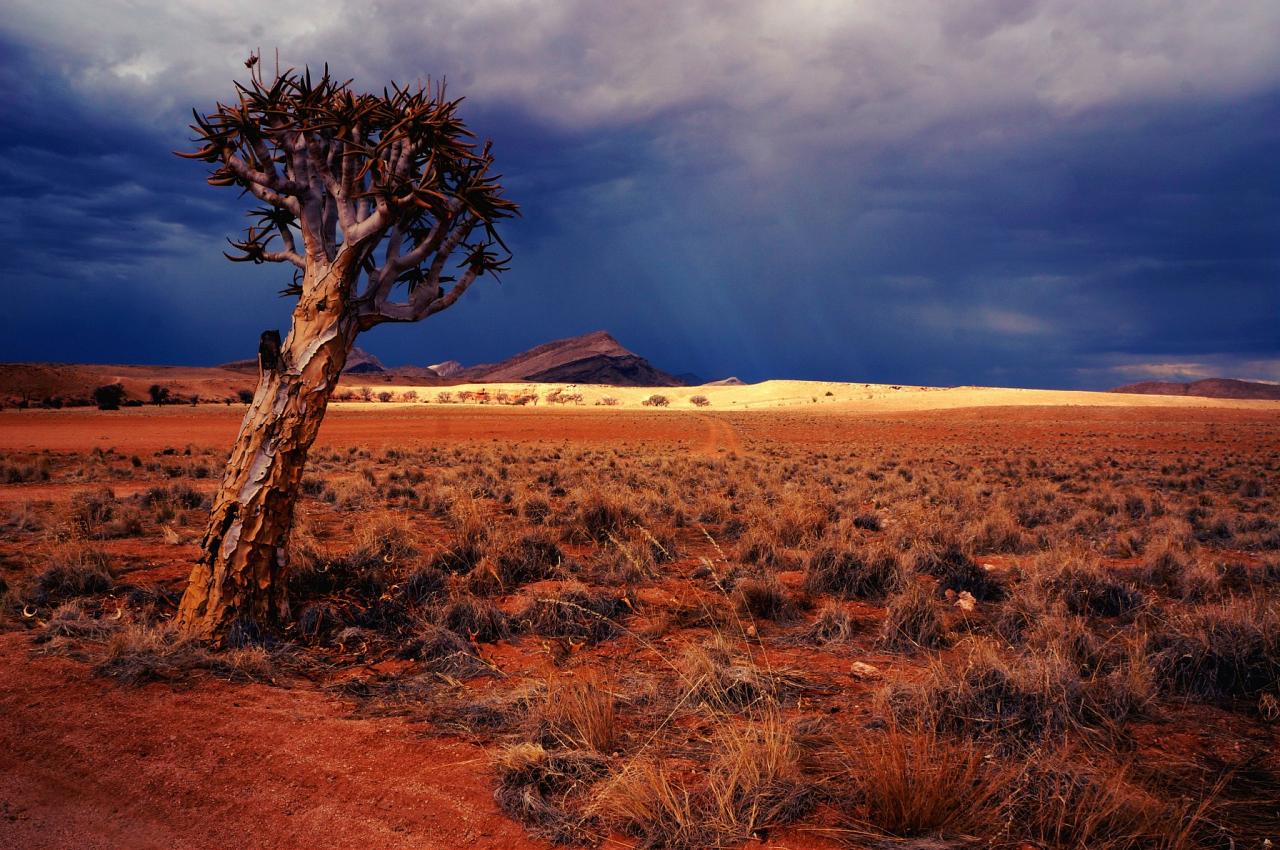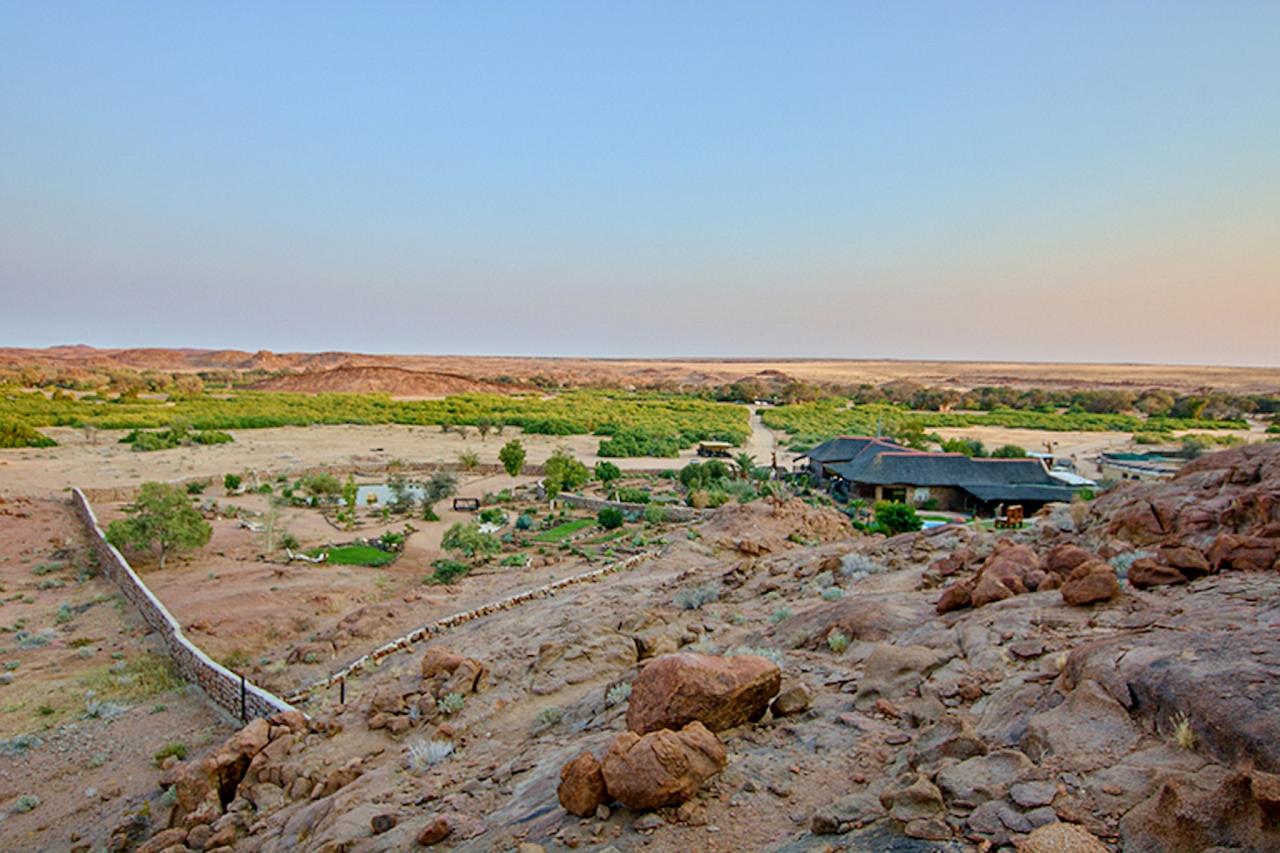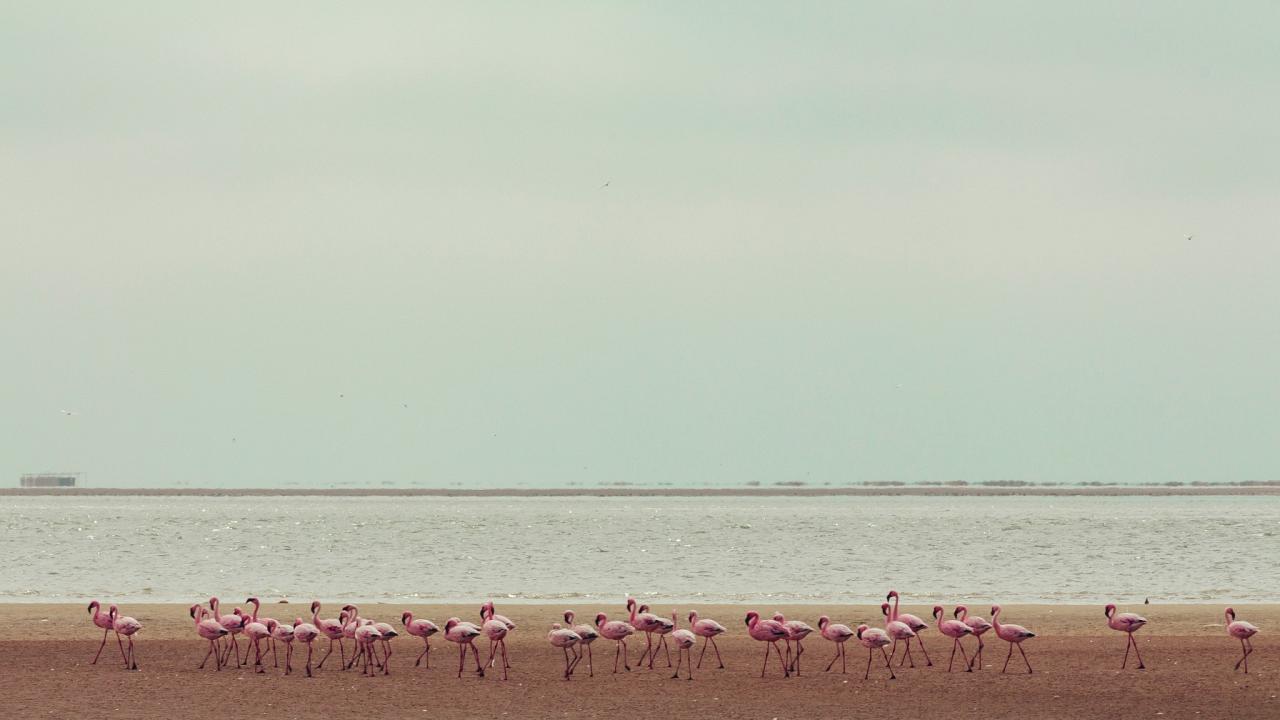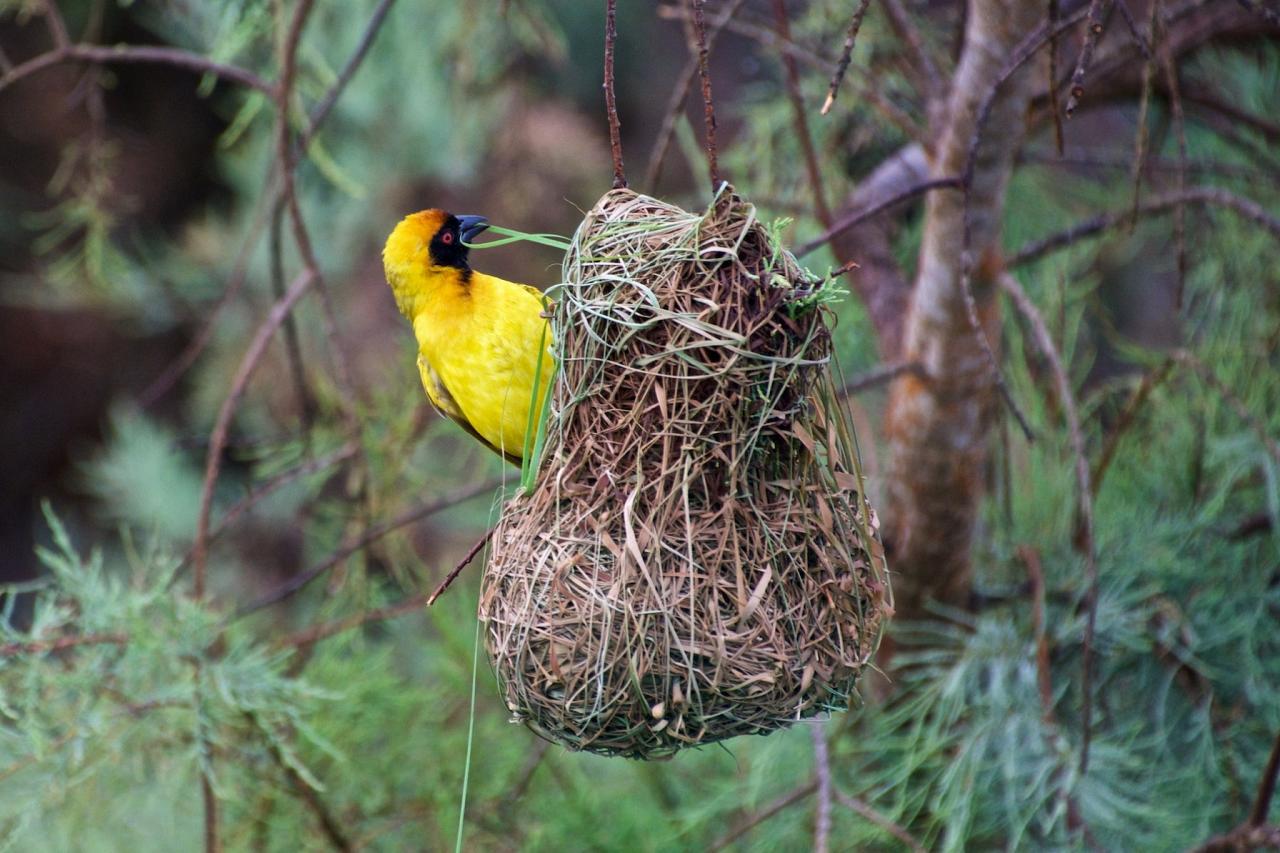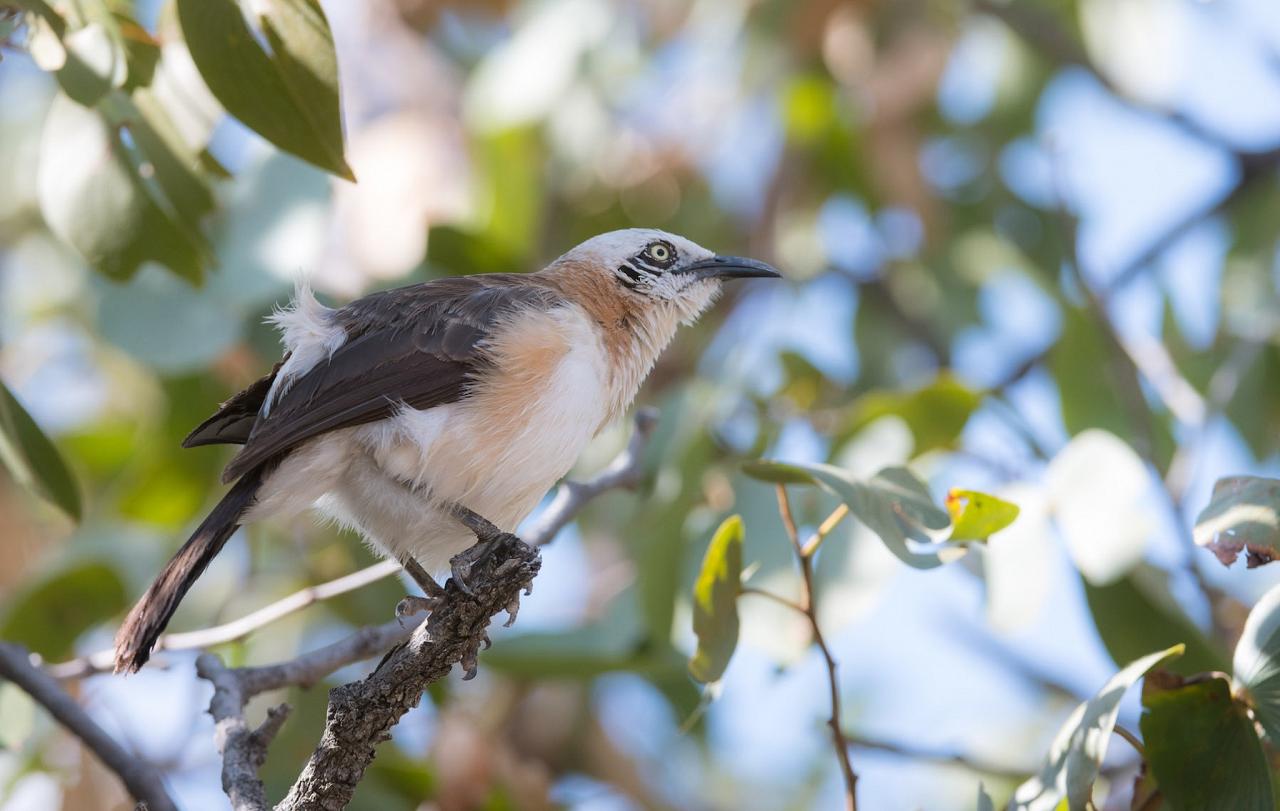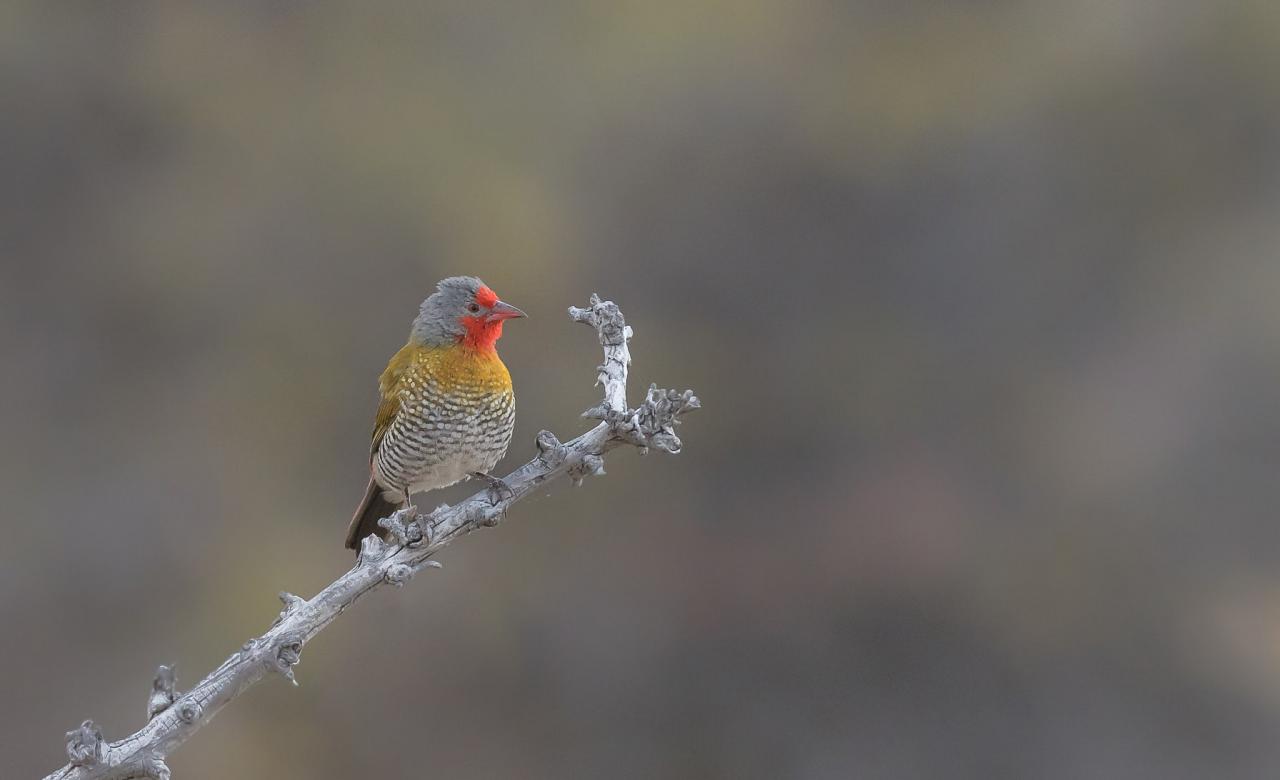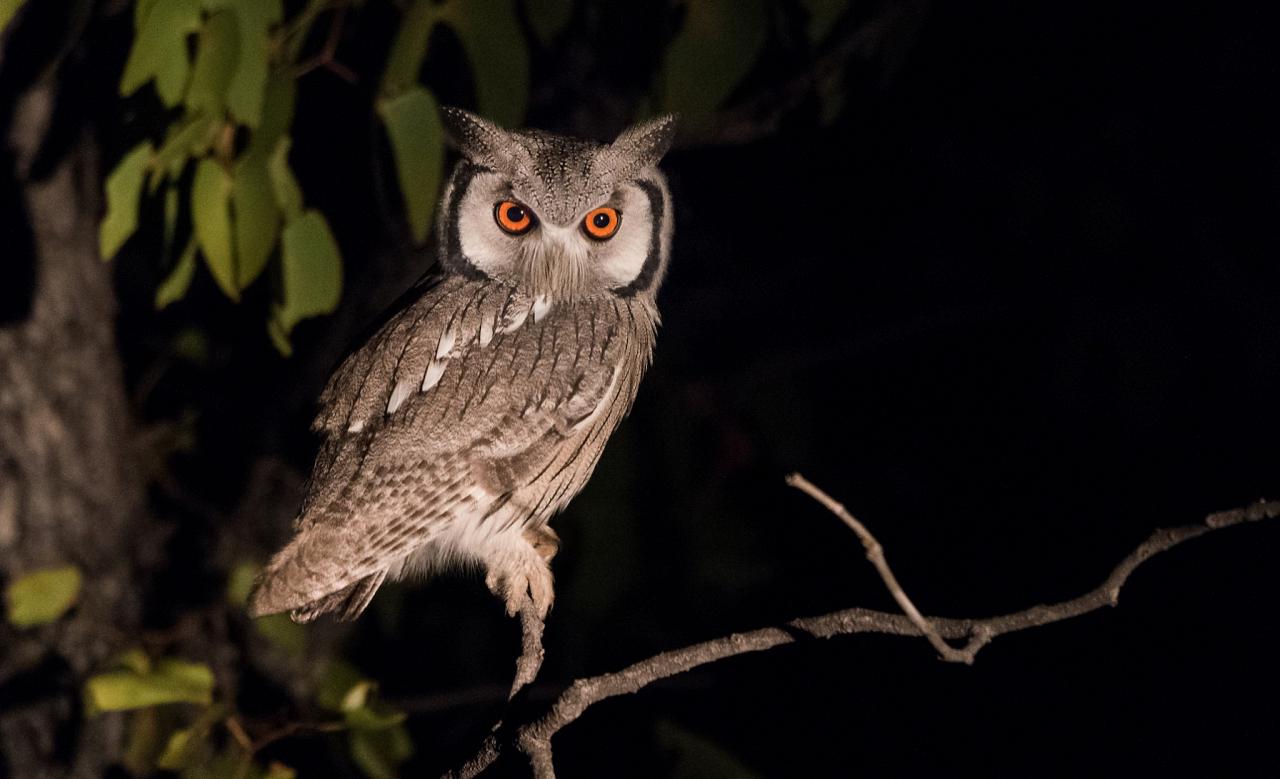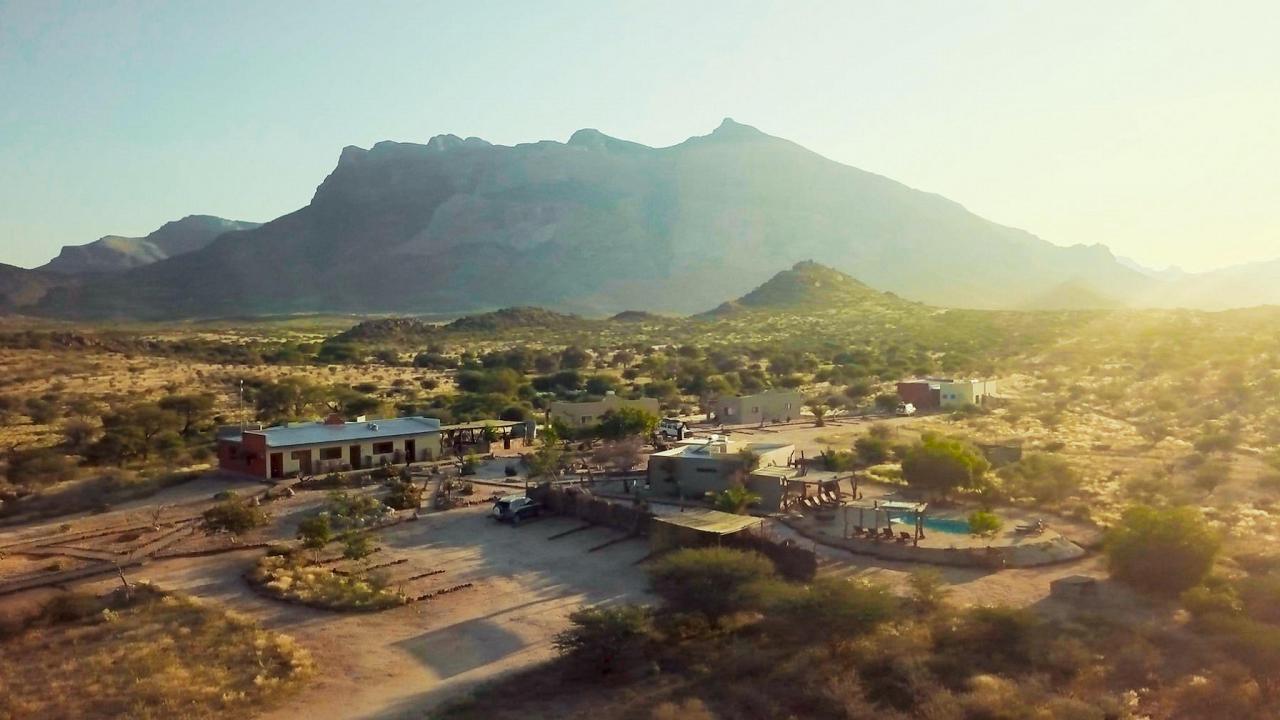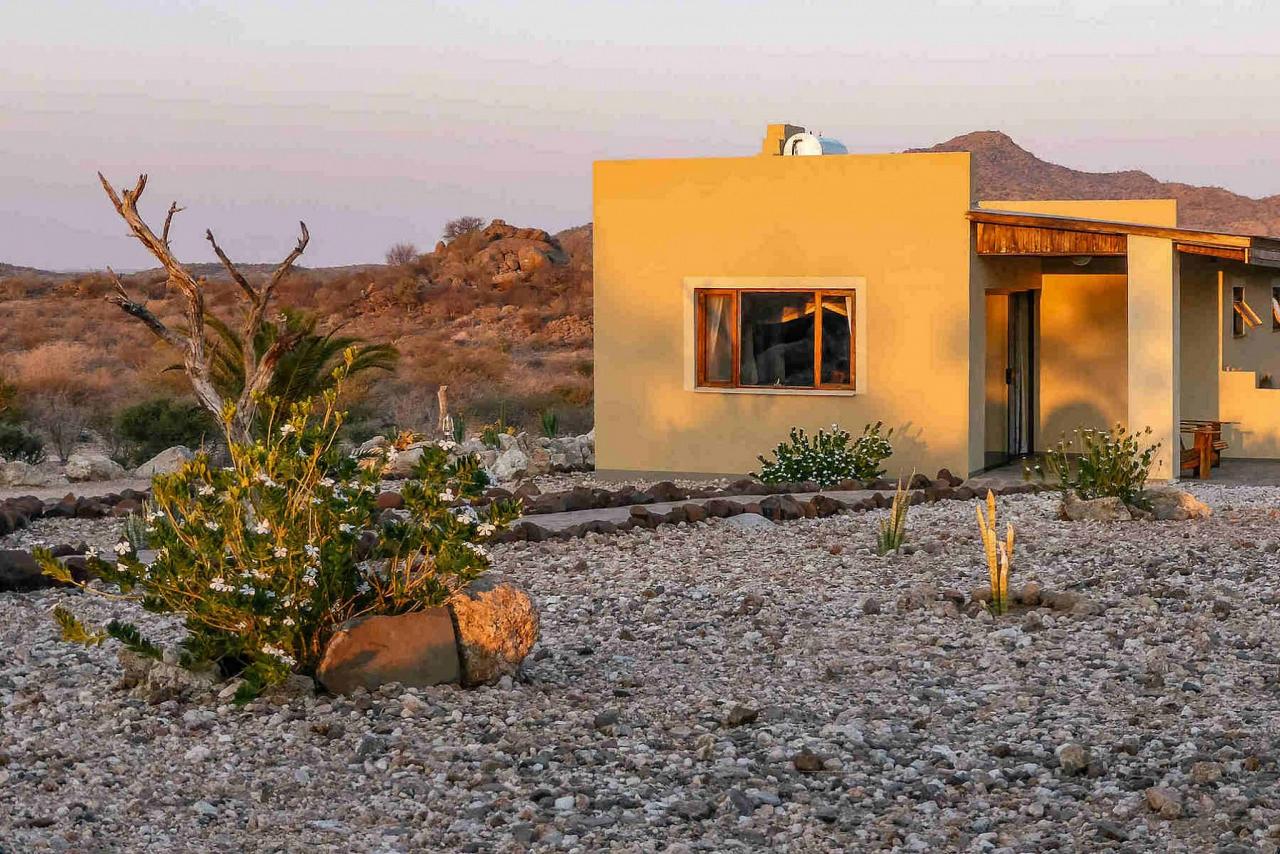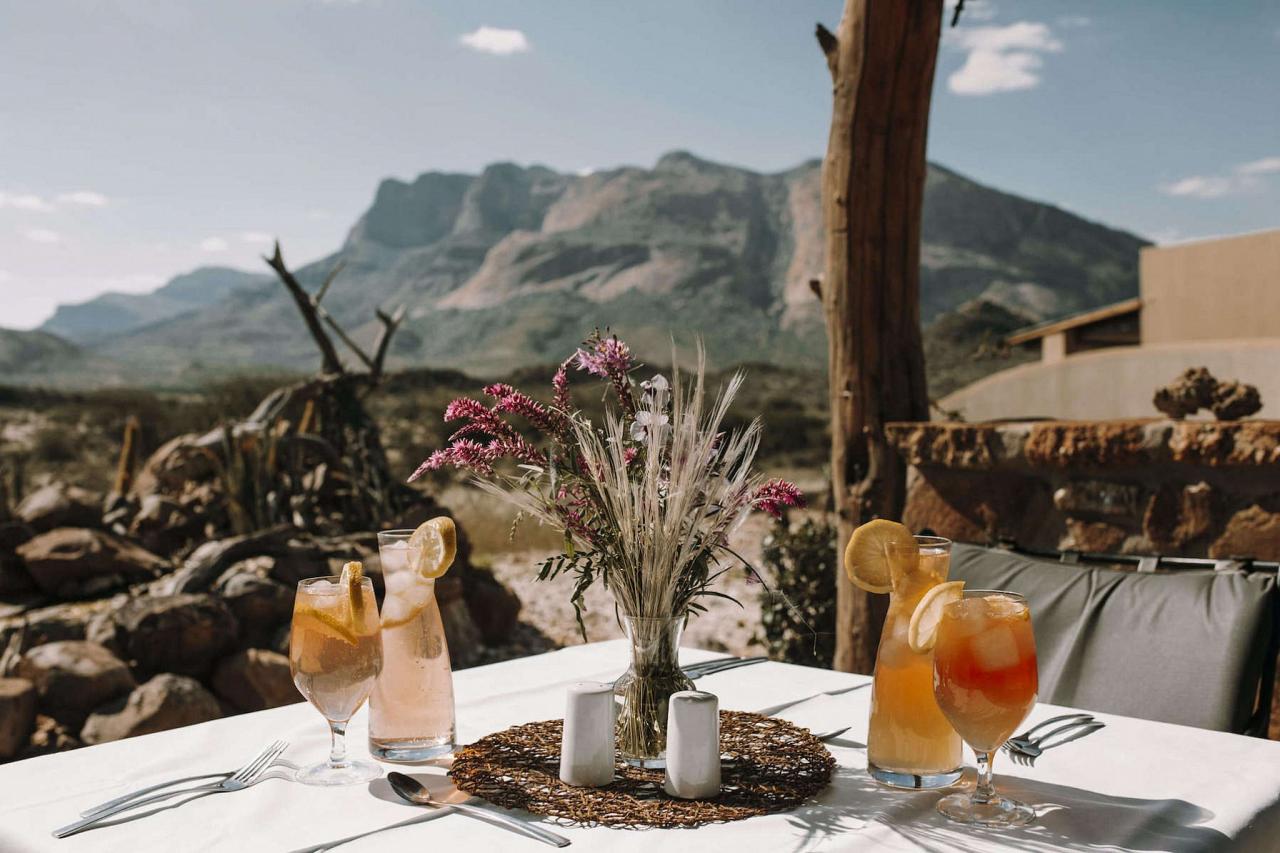- Overview
- Full Itinerary
- Photo Gallery
- Costing
- Travel Details
- Trip Reports
- Guide
- Map
- Know Before You Go
Namibia hosts superlative scenery, a dramatic arid landscape of great beauty. Along the route for our Namibia nature tour, we witness massive red dunes, fanciful granite outcrops, an isolated, iconic inselberg (the Brandburg), and colonial Swakopmund on the scenic coast. We find an array of arid-land birds, many not found in other parts of Africa.
The Namib is the oldest desert in the world, with oases for a rich and sometimes odd array of mammal, plant, and birdlife. Elephant, Oryx, Blesbok, hornbills, Rockrunner, Herero Chat, Dune Lark, numerous birds of prey and more await! Highlights also include time at the vivid red dunes of Sossusvlei, which contrast coastal Walvis Bay and the rugged Erongo Mountains. We immerse in this treasured landscape on our Namibia wildlife tour.
This year we also visit stunning and wildlife-rich Etosha National Park, where Elephant, Zebra, and other species congregate at scenic waterholes and birds abound.
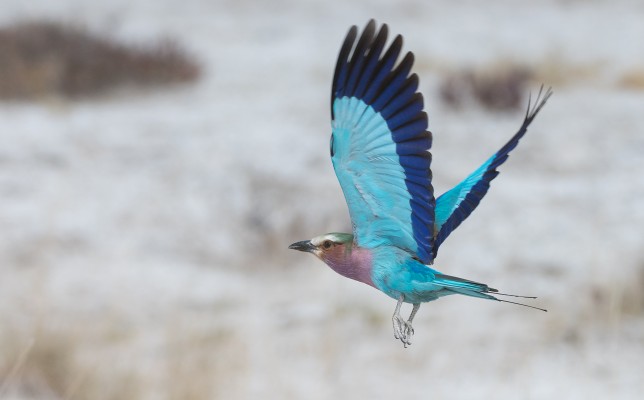
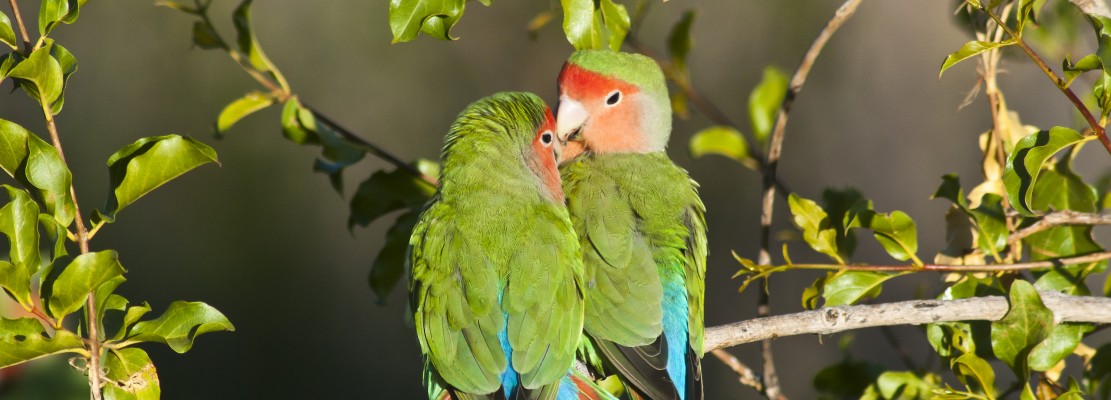
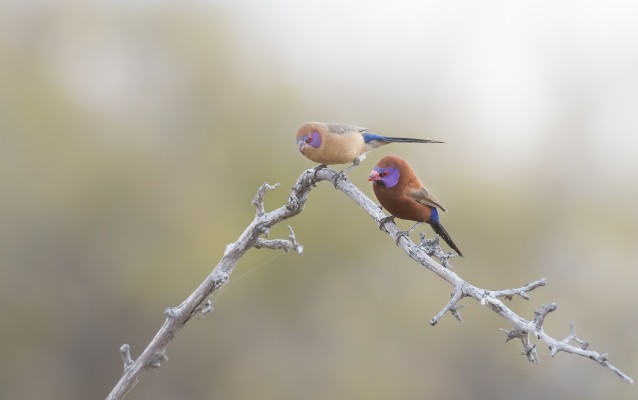
Tour Highlights
- Experience the Namib, the world’s oldest desert, famous for massive red dunes at Sossusvlei
- Look for signature bird species such as Rockrunner, Herero Chat, Hartlaub’s Spurfowl, and Dune Lark
- Walk amidst the fanciful granite outcrops of the Erongo Mountains, known for impressive wildlife, rock art, and over 200 species of birds
- Visit the base of the mighty Brandberg, Namibia’s largest mountain (8450 feet), a dramatic inselberg that is home to exciting birds and mammals
- See one of the most bizarre plants on the planet, the Welwitschia
- Watch exciting raptors such as African Black (Verreaux’s), Martial, and Booted Eagles, Black-chested Snake Eagle, Lanner and Peregrine Falcons, Rock Kestrel, and more
- Find arid-land specialty birds including chats, coursers, sandgrouse, numerous larks, bustards, and korhaans
- Visit Etosha National Park—wildlife splendor!
- Enjoy the colonial seaside town of Swakopmund
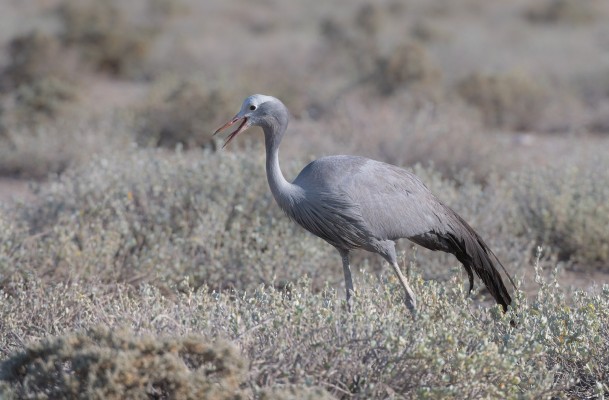
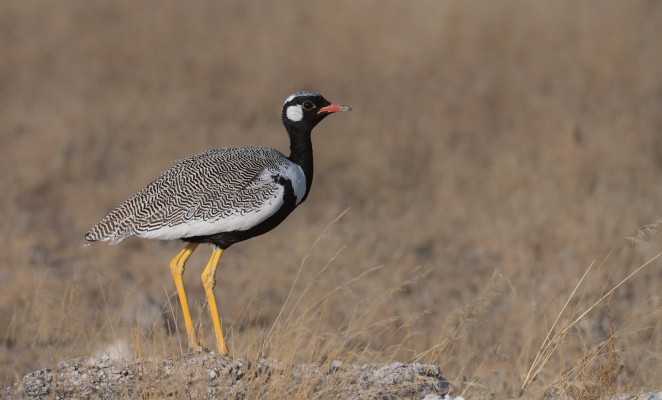
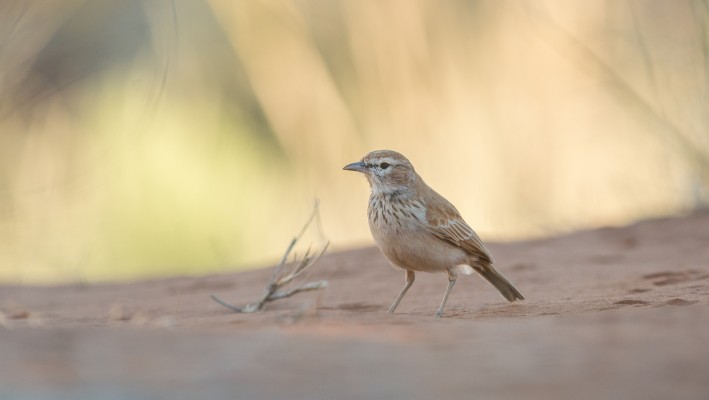
Trip Itinerary
Itineraries are guidelines; variations in itinerary may occur to account for weather, road conditions, closures, etc. and to maximize your experience.

Mon., July 19: Arrivals in Windhoek
Welcome to Namibia! Please plan to arrive at Hosea Kutako International Airport in Windhoek at your convenience today. You will be met at the airport for the transfer to our hotel. We stay the first night in Windhoek and will offer some birding this afternoon for those arriving in time—if you can stay awake to shift to this time zone, birding awaits! Rocky slopes should yield Short-toed Thrush, White-tailed Shrike, Barred Warbler and with luck, a favorite trip bird for some, the Rockrunner.
Close to Windhoek is Avis Dam, a great area to bird with easy walking. Over the water we should find aerial-feeding Bradfield’s and Palm Swifts, Rock Martin, and both Greater striped and Pearl-breasted Swallows. Wetland birds occur and South African Shelduck, Cape Shoveler and Red-billed Teal are usually present. In the shrub-lands surrounding the dam, Desert Cisticola, Yellow-bellied Eremomela, Black-chested Prinia and a variety of seedeaters are easily seen. We will keep dinner simple tonight as many will feel a bit jet lagged. If you wish to arrive a day early to rest up from travel, we can help you make those plans.
Accommodations at River Crossing Lodge, Windhoek (D)
Tues., July 20: Windhoek | Sossusvlei
After birding an area of dry thorn savanna habitat of the highlands near Windhoek, we proceed towards the South, birding along the-scenic route we take. On such drives we share knowledge of Namibian geography, history, and culture as we go. A good portion of today’s drive is on gravel roads that wind through changing elevations.
Species we can expect to encounter on various stops today and in the next few days include the near-endemic Rosy-faced Lovebird, White-tailed Shrike, Buffy Pipit and a number of Southern African regional endemics such as Ashy Tit, Southern Pied Babbler, Short-toed Rock Thrush, Mountain Wheatear, Southern Ant-eating Chat, Kalahari and Karoo Scrub-Robins, Black-chested Prinia, Marico and Chat Flycatchers, Crimson-breasted Shrike, Cape Glossy and Pale-winged Starling, Dusky and Scarlet-chested Sunbird, Great Sparrow, Sociable Weaver, Scaly-feathered Finch, Lark-like Bunting, and the handsome Groundscraper Thrush.
We also have a good possibility of seeing large and impressive raptors on this route, such as Martial, Booted, Tawny and African Hawk-Eagle. Pale-chanting Goshawks and Rock Kestrel can be abundant over the Spreetshoogte pass, a spectacular pass overlooking the vast Namib Desert plains and inselbergs. This is also a good place to scan for Mountain (Hartmann’s) Zebra, Greater Kudu and Klipspringer.
One of the impressive sights to behold is the massive nest of Sociable Weavers that often houses a pair of Pygmy Falcon. We will be stopping regularly along the way to look for Rufous-eared Warbler, White-throated Canary, Chestnut-vented and Layard’s Tit-Babbler and a number of lark species. We pass several extensive local farms on which we could see arid-land adapted mammals grazing, such as Oryx and Springbok.
Descending the Spreetshoogte Pass we enter the oldest desert in the world, the Namib. We look for Herero Chat, Karoo Chat, Rüppell’s Korhaan, Ludwig’s Bustard, Burchell’s Courser and other arid adapted species such as Yellow Canary, Cardinal Woodpecker, Pririt Batis and with luck Karoo Long-billed Lark.
Our accommodations are very close the entrance gate of Namib Naukluft National Park. Individual cabins blend in with the stark environment and keep a light footprint on the landscape with their simple design. We are immersed in the Namib here within granite outcrops and expansive desert views. Wildlife can roam just out our doors. Our spacious, air-conditioned rooms all have private bath and patios. Enjoy a drink from the bar or a dip in the pool in view of Elim Dune, or simply take in the immense sense of peace and quiet that this vast desert brings.
Accommodations at Desert Quiver Camp (B,L,D)

Wed., July 21: Namib-Naukluft National Park Sossusvlei & Deadvlei
We get up by starlight to be at the park gate for first entry and sunrise at Sossusvlei. Marvel at some of the largest sand dunes in the world, all a deep orange-red color that glows with first light. We spend the day exploring this magnificent landscape with its unique natural history. A special effort will be done to locate the Dune Lark, Namibia’s only true endemic. Learn about desert plant adaptations, look for lizards and study animal tracks left in the sand.
You also have the opportunity to walk into the world-renowned area called Deadvlei where you will have the opportunity to photograph this magnificent landscape. Artistic skeletons of tree trunks rise from a white clay pan with massive red dunes behind—just striking! Both areas are within the larger Namib-Naukluft National Park.
Returning to Camp, relax at the pool or sort through those first photographs—now your own!
Accommodations at Desert Quiver Camp (B,L,D)
Thurs., July 22: Sossusvlei | Swakopmund
Today we head towards the coast, stopping regularly to look for arid zone specialists such as Ludwig’s Bustard, Sociable Weaver, Pygmy Flacon, Lappet-faced Vulture and Burchell’s Courser. The dry river courses and drainage lines are relatively well wooded and we should see species such as Dusky Sunbird, Rosy-faced Lovebird and Scaly-feathered finch along the way.
After a lunch break in the desert we will close in on the coast where the cold Benguela current from the Atlantic Ocean brings in dense coastal fogs.
Swakopmund is a popular seaside resort because of its old-world charm and relaxed atmosphere. Swakopmund exudes romance and history which makes it a rich cultural melting pot of old and new. The town is an eclectic mixture of Bohemian and Bavaria which make it home to artists, hippies, strait-laced descendants of German settlers, stately Herero women in Victorian dresses, and hardworking miners, game rangers, safari operators and fishermen.
Accommodations at Pension Rapmund, Swakopmund (B,L,D)

Fri., July 23: Swakopmund & Walvis Bay
We spend most of the morning birding around the Walvis Bay Lagoon and if needed, we have a second chance here to find Dune Lark, Namibia’s endemic beauty. We are not present at the ideal time to visit Walvis Bay (October to April) when the migrant birds have moved in from the northern hemisphere by the thousands. But there are still plenty of species to see, and the sheer numbers of the birds around the lagoon are impressive. This area has the highest density of Chestnut-banded Plover, a near-threatened species, in the world. The Walvis Bay Lagoon happens to be one of Africa’s most important shorebird stopovers (it is a RAMSAR site), where we see incredible numbers of Greater and Lesser Flamingos and some extremely localized species, such as the diminutive Damara Tern.
Resident birds of the lagoon include Pied Avocet, Black-winged Stilt, White-fronted Plover, Three-banded Plover as well as the sought-after Chestnut-banded Plover. July sightings at the Walvis Bay Waterfront include some of the migratory species including Common Greenshank, Red Knot, Ruddy Turnstone, Curlew Sandpiper, Whimbrel and Bar-tailed Godwit.
We stop in at the Swakopmund salt works to look for Gray’s Lark. This pale-colored desert lark can be difficult to locate as it blends in perfectly to the expansive gravel plains which it frequents in the true Namib Desert. Another good find would be the pale form of Tractrac Chat as well as Familiar Chat, Red-capped Lark, and with luck, Rufous-eared Warbler and Karoo Eremomela. Some of the water birds encountered can be White-breasted, Bank, Cape, and Crowned Cormorants, Hottentot and Cape Teal, Red-billed and Maccoa Ducks, Cape Shoveler, Grey-headed Gull, and Little Grebe.
Return to enjoy the seaside town of Swakopmund, known for its wide-open avenues, colonial architecture, and its surrounding otherworldly desert terrain. Founded in 1892 as the main harbor for German South West Africa, Swakopmund is often described as being more German than Germany. While touristy, we have fun here and are assured of some great dining this evening.
Accommodations at Pension Rapmund, Swakopmund (B,L,D)

Sat., July 24: Swakopmund | Erongo Mountains
After breakfast we depart for the Erongo Mountains via the Spitzkoppe.
The Spitzkoppe is one of a series of impressive granite inselbergs that rise steeply out of the desert plains. It is at this imposing Batholith where we have our best chance of finding Herero Chat, should we have missed out on this species at the Spreetshoogte. On the way we may also encounter the rare and declining Burchell’s Courser and many other sandy desert species like Stark’s Lark and other strategic species like Karoo Long-billed Lark.
On the plains surrounding these hills we should see Rüppell’s Korhaan, Namaqua Sandgrouse, Chat Flycatcher and Karoo Chat, Verreaux’s and Booted Eagle, Augur Buzzard, African Hawk-Eagle and Lanner Falcon also occur in the hills as do Rosy-faced Lovebird, Carp’s and Ashy Tit, White-throated Canary, Layard’s Tit-Babbler, White-tailed Shrike, Double-banded Courser, Starks, Sabota, Red-capped, Spike-heeled, Fawn-coloured and Rufous-naped Larks, White-browed Sparrow-Weaver, Mountain Wheatear, Pale-winged Starling, Bradfield’s Swift, Rockrunner, Monteiro’s and Damara Red-billed Hornbill.
The Erongo Mountain Range, an expanse of rugged and picturesque wilderness with fanciful geologic features, is one of Namibia’s most iconic places to visit, and in addition to excellent birding we find magnificent caves and rock painting sites, and an impressive array of wildlife species. The hoofed mammals include Wildebeest, Impala, Blesbok, Waterbuck, Kudu, Mountain Zebra, Oryx, Eland, Springbok, and this lovely range is home to over 200 species of birds. There are also Rhino, Elephant, Warthog, and Giraffe, and with luck we even have a chance at finding predators, including Leopard and Cheetah.
We will stay at Hohenstein Lodge, named after the highest peak of the Erongo Mountain. Its location is spectacular. Birding in this area is very rewarding and supports many of the Namibian near-endemics such as, Violet Wood-Hoopoe, Damara Red-billed Hornbill, Rüppell’s Parrot, White-tailed Shrike, Carp’s Tit, Rockrunner, Hartlaub’s Spurfowl and other specials like Freckled Nightjar & Rosy-faced Lovebird.The whole environment is photogenic and magical.
Accommodations at Hohenstein Lodge, Erongo Mountains (B,L,D)
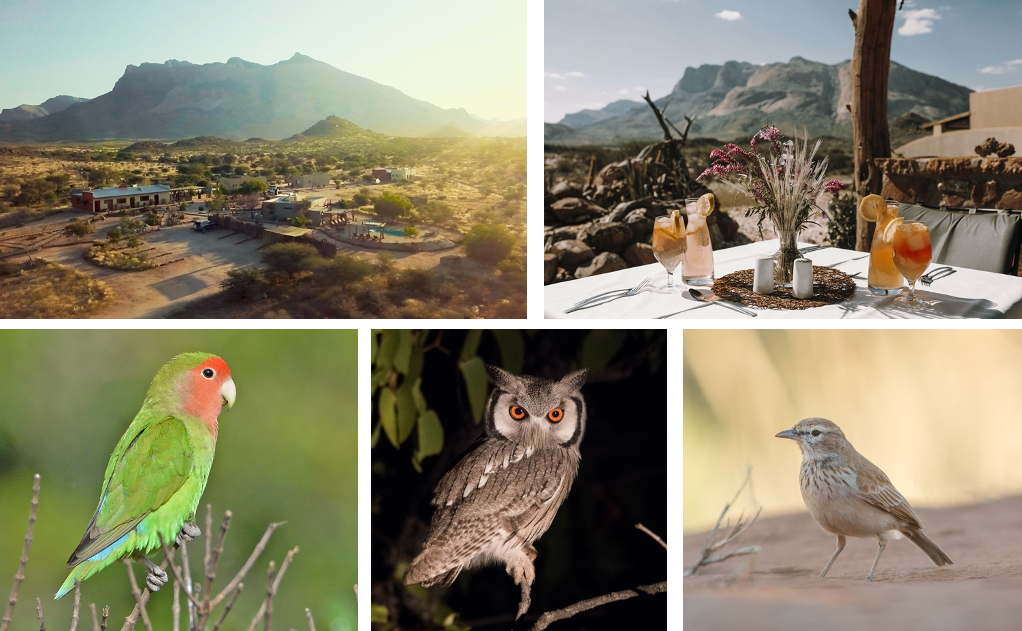
Sun., July 25: Erongo Mountains | Damaraland
Starting early in the magic of morning light with high bird activity we hope to find Hartlaub’s Spurfowl and other elusive species.
After breakfast we pack up and head to the mighty Brandberg, Namibia’s largest mountain, rising to 8450 feet above sea level. The stately Brandberg comprises a large massive inselberg of granite and has numerous valleys and gorges which offer not only good reptiles and birding but also larger animals such as Hartmann’s Mountain Zebra, Oryx (Gemsbok), Springbok, Kudu, Klipspringer and Leopard. Sculptured trees and shrubs add to the beauty and are great to scan for birds. Desert-adapted Elephant also occur in the Ugab River at the foot of the northern section of the mountain.
There is a rich diversity of reptiles, scorpions and plant life including Welwitschia plant, the only member in the family Welwitschiaceae and is one of the more bizarre plants on the planet, on the western foot of the mountain. This plant is distantly related to the conifers of Europe, some of these plants are estimated to be 300 – 550 years old, the oldest determined age was 920 years.
Birds are plentiful and raptors such as the African Black (Verreaux’s) Eagle, Martial Eagle, Booted Eagle, Black-chested Snake Eagle as well as Lanner Falcon, Peregrine Falcon and Rock Kestrel are fairly common.
The near endemic Herero Chat, Benguela Long-billed Lark and Rüppell’s Korhaan can also be encountered at the foot of the mountain, other species such as Mountain Wheatear, Familiar and Karoo Chat, Pale-winged Starling, Red-faced and White-backed Mousebird, Bokmakierie, Grey-backed Cisticola, Black-chested Prinia and Sabota Lark are common and after good rainfall thousands of Namaqua Sandgrouse can be found drinking at the many seeps and springs that run off the mountain.
Accommodations at Brandberg White Lady Lodge (B,L,D)

Mon., July 26: Damaraland
The Brandberg area has a possible 134 species of birds, 35 species of mammals and many species of reptiles, the area also has the largest diversity of scorpions in Africa!
We spend the day in search of the famous desert-adapted Elephants as well as other desert-adapted wildlife. The key bird species which we focus on while here if not yet seen is the Herero Chat, but we should also have luck with Benguela Long-billed Lark, Bare-cheeked Babbler, Rüppell’s Korhaan, Ludwig’s Bustard, Gray’s Lark, Stark’s Lark and the various birds of prey.
Serene is a good word to describe the time at our lodge. Shade trees, a pool to cool off in, good local food and a well-stocked bar with gracious hospitality.
Accommodations at Brandberg White Lady Lodge (B,L,D)

Tues., July 27 — Thurs., July 29: Etosha National Park
Today we will enter one of the most magnificent game parks in Africa, which teems with large game and boasting about 380 species of birds. We are based in the park for the next 3 nights and will spend time visiting a range of habitats. We move about the park, staying in the different camps to keep driving time down, not retracing our steps. It’s a large park and much to see! Floodlit waterholes at all three camps provide wonderful game viewing at night as well as providing opportunities to see nightjars and owls.
Etosha is famous for its large game populations and during our stay here we should see Lion, Elephant, Burchell’s Zebra, Red Hartebeest, Blue Wildebeest, Springbok, Oryx, Giraffes, Greater Kudu and several smaller antelope. Among the rarer species regularly seen are Black Rhino (especially at waterholes at night), Cheetah and Black-faced Impala, a subspecies only found in Namibia. We take time to see the various species well and there will be excellent photographic opportunities.
The grassy plains north of Okaukuejo Camp are the best areas in the park to see Pink-billed Lark, Double-banded Courser, Northern Black (White-quilled) Korhaan and Spike-heeled Lark. Raptors are abundant and we should see Martial Eagle, Secretary Bird, Bateleur, Ovambo Sparrowhawk, Tawny Eagle and Greater Kestrel. Migrant raptors such as Western Red-footed Kestrel, Lesser Spotted Eagle and Yellow-billed Kite can be seen in large numbers during the wet season. This is an excellent area for mammals and we keep a good eye out on the waterholes.
The camp situated in the center of the park, Halali is wooded, and the best site to see Violet Wood-hoopoe, Bare-cheeked Babbler and Carp’s Tit. Birding is great right from our lodgings, perfect for early morning birding options.
In the East around Namutoni the open grasslands are home to Namibia’s isolated population of Blue Crane, Temminck’s Courser, Grey-backed and Chestnut-backed Sparrowlark and Eastern Clapper Lark. The elusive Black-faced Babbler occurs in dense Terminalia woodlands in this area.
Three night’s accommodations in Etosha National Park (B,L,D, all days)

Fri., July 30: Etosha National Park, Windhoek OR on to the Rundu Area (Kavango River) for those going on to Botswana
This morning our flock disperses! Those returning to Windhoek and International flights out spend another wonderful morning within one of Africa’s greatest parks, Etosha. After lunch, we start our way back to Windhoek, approximately a 4.5-5 hour drive. Settle into accommodations near the airport and enjoy a final dinner together.
For those connecting to our Botswana tour, we head to Rundu today, also about a 4.5 to 5-hour drive. Along the way the dry Mopane gradually gives way to tropical palm savannah and finally a climax teak forest which closely resembles the Miombo woodlands further north in Africa and indeed harbors a rather similar avifauna.
South of Rundu we enter a different biome with broad-leafed woodland, and it is here that the real birding begins and the ideal habitat for Rufous-bellied Tit, Tinkling Cisticola, Kurrichane Buttonquail, African Golden Oriole, African Yellow White-eye and Southern Black Tit and your first chance of Dark Chanting Goshawk. After all this excitement, we eventually reach Rundu on the Kavango River where we have lodgings for the night.
Late afternoon the calls of Coppery-tailed and Senegal Coucals can be heard as well as many other species such as Hartlaub’s and Arrow-marked Babbler, White-browed (Heuglin’s) Robin Chat, and White-Browed Scrub Robin. Along the river you should find Pied, Giant and Malachite Kingfishers as well as Little and Southern Carmine Bee-eaters.
Accommodations at the Taranga Safari Lodge (B,L,D)

Sat., July 31: Departures from Windhoek OR from Rundu area | Drive to Botswana and Nxamaseri Lodge
Those in Windhoek may leave at your convenience today, connecting to your International flights.
Those going on to Botswana: After an early breakfast we will do some birding at the Rundu Sewerage Works. What would a birding trip be without such a stop! From there we will continue to Nxamaseri via Mahango Game Park where we will not only see new birds, but also several new game species. We will stop en route and try our luck with the Souza’s Shrike.
We are driving through the Caprivi Strip section of Namibia. We have a border crossing going into Botswana. We then pass through Shakawe and our plan is a drop off at Nxamaseri Lodge in time for a late lunch and some relaxation before others of the group arrive on a flight from Maun.
Cost of the Journey
Cost of the 13-Day / 12-Night journey $4990 DBL / $5275 SGL from Windhoek, Namibia. This cost includes accommodations for 12 nights, all meals as specified in the itinerary, professional guide services, other park and program entrance fees and miscellaneous program expenses.
Tour cost does not include: round-trip transportation from your home city to Windhoek, optional activities, or items of a personal nature such as laundry, telephone charges, gratuities for guides, lodges and drivers, or beverages from the bar.
Travel Details
Please plan to make air travel plans only after the minimum group size has been met. We will send you a confirmation email as soon as the trip has been confirmed.
Please plan to arrive at your convenience in Windhoek at Huseo Kutako International (WDH) on July 19. Please note that flights will originate from the United States on July 18. Please plan departure flights at your convenience on July 31.
Browse below for trip reports and species lists from past versions of this and other tours from this destination.
Namibia
- September 2014
- July 2022
- October 2022
- September 2024 (Namibia-Botswana Trip)
-
Greg Smith, Guide Emeritus

Greg spent over 20 years working as an ecologist managing sensitive bird species for California State Parks along the Central coast. His decision to promote to the Park Superintendent series allowed him to work directly with partners in conserving lands for the benefit of birds, people, and resources. And then he retired! Three days later he started his now eleven-year career with Naturalist Journeys by leading his first of over sixty tours. He had already traveled to all seven continents, and now has a Master Bird Banding permit, both of which made him a great fit to work with Peg and to lead natural history and birding tours to her exceptional array of tour locations. His relaxed style and breadth of knowledge makes his tours both educational and fun, all while exploring Naturalist Journeys' diverse locations and viewing the areas' distinctive birds, wildlife, and plant species. Two of his favorite past times are good food and photography, so take a peek at his Flickr site to see some of what he shares with those that join him on his tours.
Other trips with Greg Smith, Guide Emeritus
-
 Lesvos, Greece: Migration! FULL - Check out Spain: Birding & Nature!April 19 - 26, 2025
Lesvos, Greece: Migration! FULL - Check out Spain: Birding & Nature!April 19 - 26, 2025 -
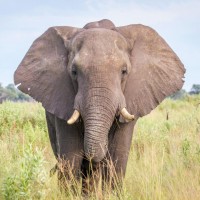 Enchanting Okavango: Birds & Mammals of Botswana FULL - Check out Southern Tanzania!August 2 - 13, 2025, w/Kalahari extension
Enchanting Okavango: Birds & Mammals of Botswana FULL - Check out Southern Tanzania!August 2 - 13, 2025, w/Kalahari extension -
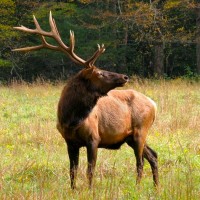 Yellowstone in The Fall FULL - See our second departure!September 20 - 26, 2025
Yellowstone in The Fall FULL - See our second departure!September 20 - 26, 2025 -
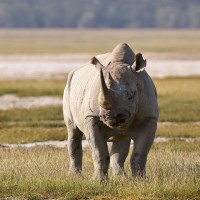 Tanzania: Wildlife & Birding Safari Sold as a private tour.February 24 - March 9, 2026, w/Amboseli & Nairobi National Parks extension
Tanzania: Wildlife & Birding Safari Sold as a private tour.February 24 - March 9, 2026, w/Amboseli & Nairobi National Parks extension
-
Pace & Protocols +
Photo credits: Banner: Springbok by Arne Smith on Unsplash; Giraffe by Peg Abbott; Dead Trees by Marcelo Novais on Unsplash; Lesser Flamingo, Bob Rodrigues; Lilac-breasted Roller, courtesy Batis Birding Safaris (BBS); Rosy-faced Lovebirds, courtesy BBS; Violet-eared Waxbill, courtesy BBS; Blue Crane, courtesy BBS; Northern Black Korhaan, courtesy BBS; Dune Lark, courtesy BBS; Springbok by Arne Smith on Unsplash; Desert Quiver Camp, courtesy of desertquivercamp.com; Martial Eagle, by BBS; Lodge room, courtesy of desertquivercamp.com; Violet-eared Waxbill, by BBS; Quiver camp at night, courtesy of desertquivercamp.com; Red-billed Hornbill, by BBS; Chestnut-banded Plover, Bob Rodrigues; Chestnut-vented Warbler, Bob Rodrigues; Pink-backed Pelican, Bob Rodrigues; Greater Flamingo, Bob Rodrigues; Hohenstein Lodge x2, courtesy of ondili.com; Rosy-faced Lovebird, Bob Rodrigues; White-faced Owl, by BBS; Dune Lark, by BBS; Brandberg White Lady Lodge, courtesy of brandbergwllodge.com; Cheetahs, by Peg Abbott; Southern Carmine Bee-eater, Greg Smith; Red-headed Finch, by BBS; Montiero’s Hornbill, Bob Rodrigues; Giant Kingfisher, Peg Abbott; Dead Trees by Marcelo Novais on Unsplash; Heavy Sky by Johnny Chen on Unsplash; Brandberg White Lady Lodge, courtesy of brandbergwllodge.com; Oryx Photo by Joe McDaniel on Unsplash; Flamingos at Windehoek Photo by Ryan Cheng on Unsplash; Desert Quiver Camp Lodge x3, courtesy of desertquivercamp.com; Weaver by Fabiana Rizzi on Unsplash; Bare-cheeked Babbler, BBS; Green-winged Pytilia, BBS; White-faced Owl, BBS; Welwitchia by Alex Vargo; Hohenstein Lodge x3, courtesy of ondili.com.





